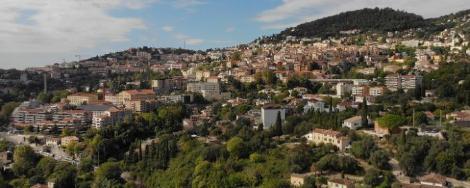Grand Centre - Agglomeration community of Pays De Grasse
Regenerating the city’s priority districts #1
January 2024
Agence nationale de la cohésion des territoires (ANCT)
As part of the Fabrique Prospective, each inter-municipality supported set up a local working group made up of around fifteen stakeholders of its choice. The Ellyx and Oxalis consortium ran four local seminars in each area to help the working groups look to the long term and co-construct a programme of actions to be carried out in the short term around the four themes of the Fabrique Prospective:
-
Amplifying the ecological transition of the QPVs ;
-
The emergence and development of new economic activities based on nature in the inner suburbs;
-
The social link and participation of residents in public life;
-
Strengthening territorial cohesion, i.e. the links between the QPVs and their surrounding areas.
Feedback from the Pays de Grasse urban community
To download : grand_centre_id.pdf (8.5 MiB)

Located in the Alpes-Maritimes department, the Pays de Grasse conurbation community (CAPG) comprises 23 communes and just over 100,000 inhabitants covering an area of 490 km2. The area comprises 82% forests and semi-natural environments and is characterised by three types of landscape: the alluvial plain of the Siagne, the hilly hinterland and the medium-altitude mountainous zone. The perfume-making know-how of the Pays de Grasse has been listed as an intangible cultural heritage site by the United Nations Educational, Scientific and Cultural Organisation (UNESCO) since 2018. As well as perfume plants, Grasse has a long history of producing orange wine. The town was also awarded the Ville d’art et d’histoire label in 2003. Grand Centre is one of Grasse’s two QPV neighbourhoods. It has a population of 6,806, or 13.97% of Grasse’s total population. Grand Centre comprises the historic centre and the Saint-Claude district (the station area). The historic centre is made up of sloping lanes, narrow streets, mazes, small squares, gardens and staircases, with streams and springs running through the subsoil, causing high levels of humidity in buildings and contributing to the deterioration of housing.
When the 2015-2023 city contract was being drawn up, residents highlighted the mineral nature of the historic centre, as well as its lack of vegetation and public spaces. In addition, the district’s private housing stock, representing 81.6% of the total in 2021, is plagued by problems of insalubrity and the presence of slum landlords.
Jérôme Viaud, President of the CAPG and Mayor of Grasse, and Valérie Têtu, head of the CAPG’s social economy and solidarity programme, brought together around twenty local players as part of the Fabrique Prospective: These included the deconcentrated services of the State, social landlords, the regional biodiversity agency, Ademe, local associations, intermunicipal and town services, the LPO, the Provence-Alpes-Côte d’Azur Region, the Tetris cooperative society of collective interest (Scic), the citizens‘ council, the Grasse entrepreneurs’ club, etc. They have drawn up a vision based on four key points:
-
the neighbourhood’s pathways are being upgraded: the alleyways and streets have been redesigned to link the neighbourhood with the surrounding areas. These pathways, planted with trees to refresh the city, are conducive to the development of biodiversity. A funicular has been installed, passing by the station and the swimming pool in particular;
-
Water has become an asset to the district (plant purification at the foot of the buildings, revealing the canals, micro power station, etc.);
-
The area is planted with vegetation: the planted school grounds are adapted to the rise in temperature associated with climate change. Developments encourage biodiversity (e.g. installation of nesting boxes) and agricultural and floricultural projects;
-
training courses related to the ecological and solidarity-based transition are being developed in conjunction with Grasse Campus.
With a view to responding to this vision, the participants in the local seminars have co-constructed a programme of actions around three axes:
-
mobilising local players and residents to raise their awareness of nature: organising events (e.g. a nature festival in the QPV every season, a nature film festival, etc.); organising sensitive walks in the district using participatory science to discover biodiversity; holding a competition for balconies in bloom in the district; setting up renaturation actions with the district’s shopkeepers (plant pergolas, edible plants, etc.); creating shared gardens ;
-
Collect data on water, heat islands and the state of biodiversity in the QPV: draw up a water management and development plan including an analysis of wetlands and run-off water, a study of the healthiness of ground floors and a study of the levers for developing water resources; map existing nature areas; identify urban heat islands; collect data on biodiversity in connection with the biodiversity atlas currently underway and via participatory science tools;
-
Encourage composting in the QPV: map out the locations where composters can be installed and identify the most suitable collection solutions (see box below); set up a waste and coffee grounds collection scheme with local restaurant owners; design and organise awareness-raising, communication, training and monitoring initiatives for local residents (e.g. public meetings, awareness-raising workshops on food waste, etc.).